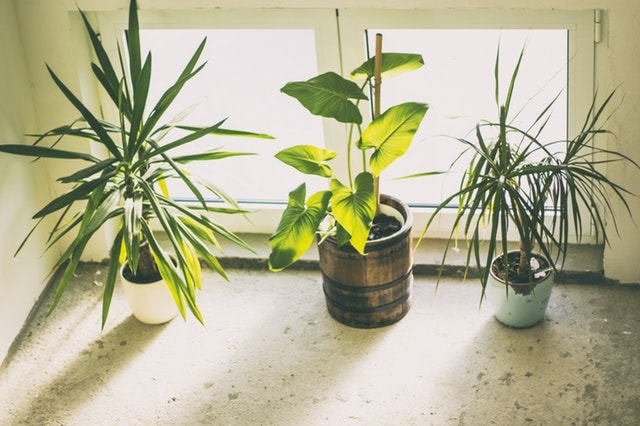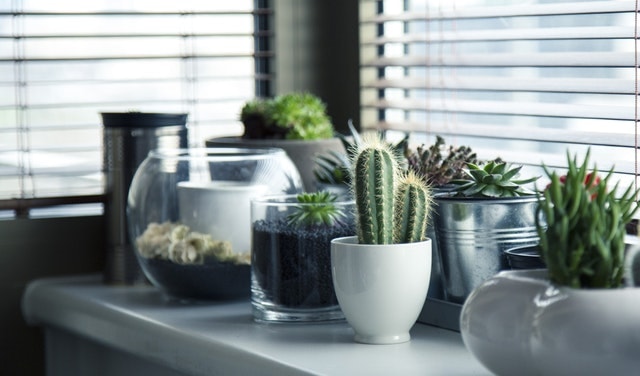Most people love to grow indoor plants in their homes. These plants require low sunlight and less maintenance to grow. Adding greenery to your home even helps to purify the air and refresh your mind.
But certain indoor plants can be poisonous for your pet cat. For instance, if we talk about peace lily, its dark leaves and white flowers can brighten up any space in your household. But this plant contains calcium oxalate, which is fatal for your furry friend.
Another popular plant is the jade plant. The dark green oval shape leaves look quite attractive when you keep them in any corner of your house. But if your pet cat chews jade leaves, it can adversely affect its health.
So, we recommend you always choose indoor plants 100 percent safe for your pet cat.
We have listed below eight low-light indoor plants safe for cats. So you can keep reading this article to learn about safe indoor plants for your pet cat.
8 Low Light Indoor Plants Safe For Cats
1. Prayer Plant
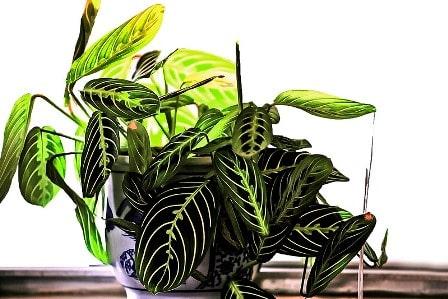
The prayer plant is a distinguished tropical plant that is quite popular for its leaves. They are the perfect plants to add color to any corner of your house.
This plant is even absolutely safe for cats and other animals. So, you can keep them indoors without any problem.
The foliage of the prayer plant is usually deep green, velvety, yellow splotches in the middle and have red veins that travel from the center to the tip. These plants grow best in bright and indirect sunlight.
Warm moist, and well-drained soil is best for growing prayer-plants. Try to water the plant when the top of the soil becomes dry. Insufficient or overwatering the plant can cause yellow and wilting leaves.
You need to also apply fertilizer from time to time for proper plant growth. Prayer plant grows very slowly and can reach a maximum of one foot indoors.
2. Spider Plant
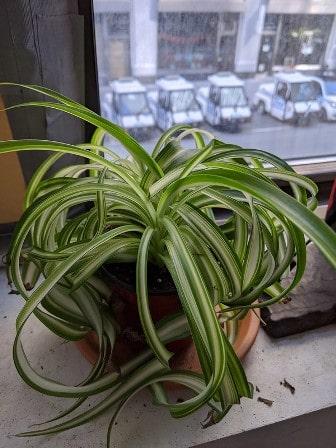
Spider plant is a well-known indoor plant and perfectly safe for pets like cats.
It is most popular with beginners as it does not require much maintenance. This plant grows almost 12 -15 inches tall. The leaves have white or yellow stripes and are folded from the middle.
It requires bright and indirect light to grow properly. If you keep these plants in low light, then they will grow very slowly and may not produce platelets. You need to water the plant when the top of the soil is dry.
Check the soil within a gap of three to four days, and if it’s dry, then water the plant thoroughly until the excess water drains out from the bottom. Spider plant grows well in temperatures above 50 degrees Fahrenheit.
Pests like white flies and spider mites can occasionally attack the plant. Proper water circulation, providing enough water, and keeping the plant in bright indirect light can prevent the plant from pests.
Various studies prove that keeping spider plants in your house helps to purify the air and absorb chemicals like carbon monoxide and formaldehyde.
3. Ponytail Palm
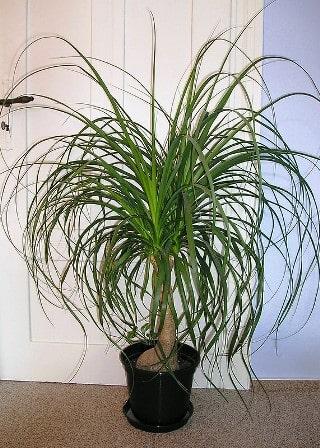
Ponytail palm is not a true palm. It belongs to the Agave family and requires less water to maintain. It grows almost 4 feet when kept in indoors. The long curly leaves of the ponytail palm can brighten up any space and look visually appealing.
The main features of this plant include a bulbous trunk whose primary purpose is to store water. The long curly hair-like leaves develop from the top of the trunk, just like a ponytail. Hence its name is ponytail palm.
They require indirect light to grow properly. Ponytail palm grows very slowly and doesn’t require much maintenance.
You must choose a pot with drainage holes so the ponytail palm can drain excess water. If you overwater this succulent, then it can cause stem rot. Some popular signs of stem rot include yellowing leaves and caudex becoming soft.
You need to fertilize them only once or twice a year. Overfertilizing can cause brown tips on foliage.
The best thing about this ponytail palm is that it is safe for cats. It means if your pet cat accidentally chews the leaves of the ponytail, it won’t adversely affect its health.
4. Rattle Snake Plant
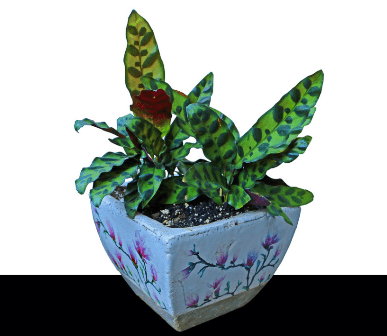
The rattlesnake plant is a pet-friendly plant and safe for your cat. The wavy pattern of the foliage is quite attractive. The underside of the foliage has purple-red tones, which is even eye-catching.
The pattern of the leaf of the rattlesnake plant is quite similar to the skin of the venomous reptile, and hence its name is the rattlesnake plant. They grow almost 18 -20 inches tall when grown indoors.
Bright indirect light is best for growing this plant. So, if you wish to keep this plant near the window, choose the one where the plant will not receive harsh afternoon sun rays.
Light, sandy and well-drained soil is perfect for growing rattlesnake plants. The ideal temperature for growing this plant is 60-70 degrees Fahrenheit.
If you expose this plant to a temperature below 60 degrees Fahrenheit, the leaves will develop brown tips or wilt and die.
Rattlesnake plant love to grow in high-humidity conditions. You can provide fertilizer to this plant during the growing season for better growth.
MORE POSTS: 5 Tropical Big Leaf Houseplants for Indoor Gardens
5. African Violets
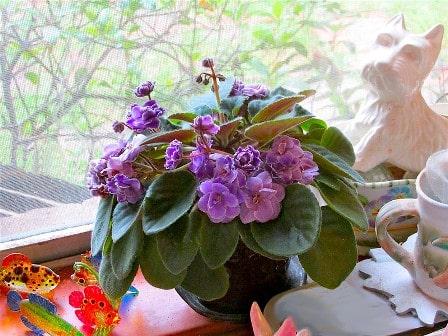
Do you have an open shelf in your kitchen or living room? If yes, then keep African violet plants there. The fuzzy foliage and violet flowers of these plants are pretty attractive and enhance the beauty of your room.
They can grow well in normal house temperatures. The ideal temperature for growing African violet is 73-77 degrees Fahrenheit.
They grow well in indirect sunlight. If you are thinking of keeping this plant near windows, then prefer to choose a window that is south or east facing. Artificial lighting, including LED or fluorescent bulbs, can also be suitable for growing this plant.
Try to always keep the soil moist for proper growth of the plant. Never overwater the plant; otherwise, the soft stems of the plant will rot within a short time.
You need to provide fertilizer almost every two weeks in the growing season, i.e., in the summer and spring seasons.
The plant is perfectly safe for your furry friend. So keep them in your household without fearing being eaten by your pet cat.
MORE POSTS: How to make Portulaca more bushy?
6. Orchid
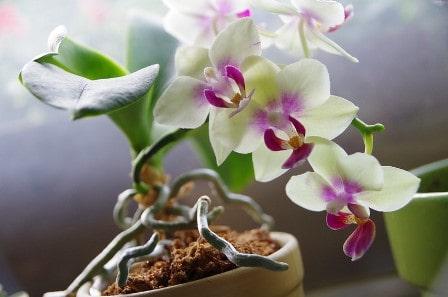
Orchids are other houseplants that you can easily grow indoors. The color blooms, waxy leaves, and curving stems can enhance any corner of your room.
Always plant orchids where they will receive plenty of bright indirect sunlight. It will be ideal to place the orchid in an east or south-facing window. Keeping orchids in bright sunlight can burn this plant. Slightly acidic soil is best for growing orchids.
Try to water the plant when the growing medium feels dry. You need to water at least twice a week in the hot summer months and only once a week in the cold months. Try always to use room temperature water while giving to orchids.
Orchids grow best between 50-90 degrees of Fahrenheit. They prefer humidity levels within 40 to 70 percent to grow appropriately.
Try to provide fertilizer to the plant in the growing season. Never provide fertilizer in cold winter months.
Orchids are usually not attacked by pests. But sometimes, aphids, mealy bugs, and spider mites can attack them. You can control them by spraying neem oil or insecticidal soap.
So overall, these plants are stunning and are safe for your pet cat.
7. Venus fLytrap
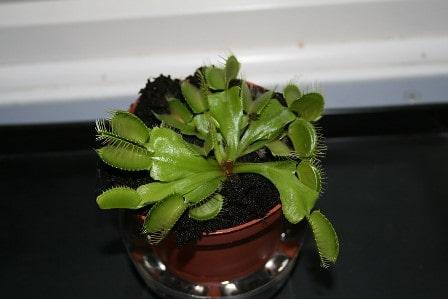
Venus flytrap is the next household carnivorous plant that is pet friendly. It grows best in acidic soil and needs at least four hours of direct sunlight. Try to provide distilled water for growing this plant properly.
The ideal temperature for growing Venus flytrap is between 70 to 90 degrees Fahrenheit. Proper air circulation is also essential for them. So try to switch on the fan in the room where you keep the Venus flytrap plant.
Never give fertilizers to this plant, as they receive all the required nutrients from the prey.
When an insect-like spider or bug sits on the leaves of Venus flytrap plants, it comes into contact with the hair, and the trap closes, which is just out of the world to see.
If you grow these plants outdoors, they will naturally have enough food. But if you are growing them indoors, feed them flies or beetles periodically.
Don’t feed any insect larger than one-third of the trap size; otherwise, the plant cannot digest it properly.
8. Bromeliad
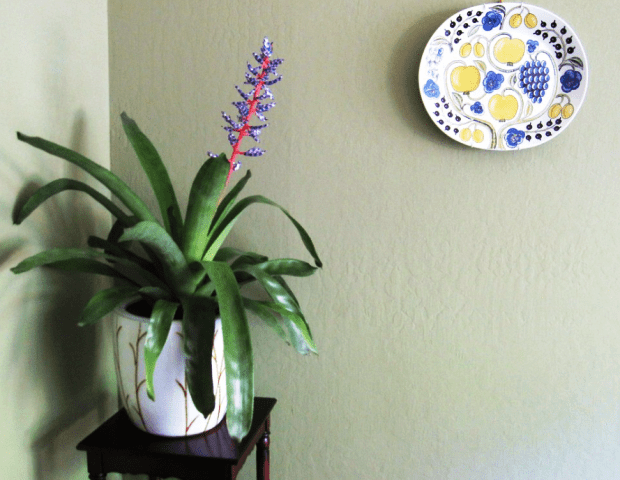
Bromeliad is another safe plant for pet animals like cats and dogs. It is an epiphyte or air plant which do not require soil to grow.
The plant can glue on any objects or cling to trees. The flower of this plant is quite attractive, but a bromeliad plant can bloom once in a lifetime. The plant produces baby offshoots after flowering and dies. These baby shoots further grow into new plants.
The Bromeliad plant grows very slowly and takes almost one to three years to mature and produce flowers fully. They require bright indirect light and high airflow for proper growth.
Conclusion
Indoor plants add beauty to your room. Pets like cats love to play with plants and may chew the leaves.
Unfortunately, certain indoor plants can b toxic for your pets. So, you must be cautious while keeping any indoors at your home, especially if you have babies or pets like a cat in your home.
We have listed above eight low lights plants safe for cats. You can keep these plants without any fear of hampering your cute little cat.
MORE POSTS: 15 Best Potted Plants for a Shaded Porch

